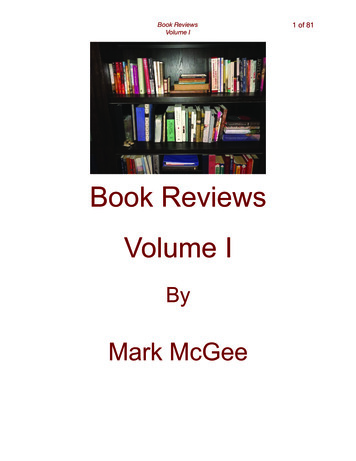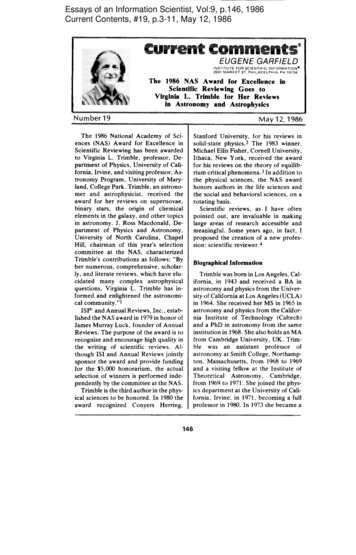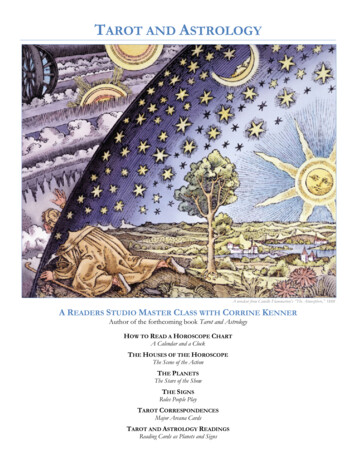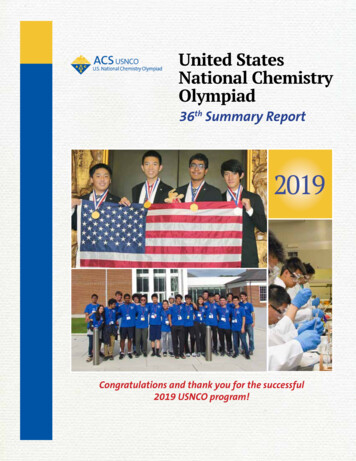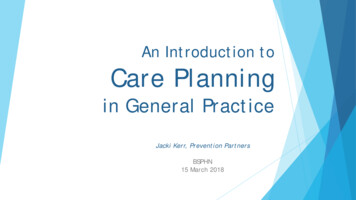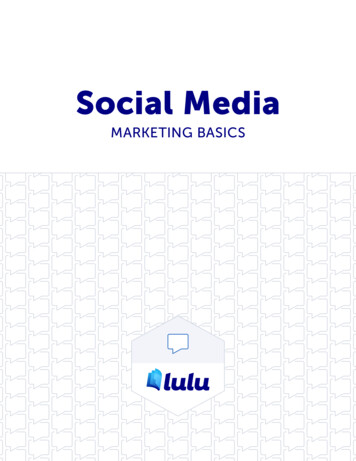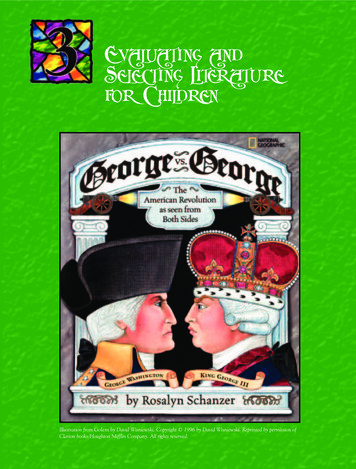
Transcription
Ashland Theological Journal 2010Book ReviewsCorrine L. Carvalho. Primer on Biblical Methods. Winona, MN: AnselmAcademic. xiii 93 pp., paper, 15.95.Dr. Carvalho, professor of theology at the University of Saint Thomas inSaint Paul, presents an amazing amount of material in a brief span. The primerseeks to introduce the novice to methods of biblical interpretation, drawingexamples from both the Old and New Testaments. She divides her material intofour chapters, with an introduction which includes forewords for teacher andstudent, a definition of exegesis, and the question vexing many beginners as towhether approaching sacred Scripture in a questioning way might be detrimentalto one's theological health.The first chapter, the world behind the text, introduces source criticism,form criticism, tradition criticism, redaction criticism, historical criticism(including 'new historicism' with its awareness of ideology of text andinterpreter), and sociological analysis. For each, she concludes with samplequestions of the type practitioners might ask, as well as a set of exercises for thestudent.In 'The World of the Text,' the author explores elements of literarycriticism, namely textual criticism, narrative criticism, rhetorical criticism,reader-response criticism, and ideological criticism, with the same types ofquestions and exercises already noted. The third chapter, looks at 'The Worldthe Text Creates,' exploring the bridge between original and current reader. Ithas sections on reading communities, postmodemism and deconstructionismwith specific mention of several approaches - canonical, liberation theology andpostcolonialism, a section on contextual approaches such as feminist andmaterialist readings, and finally a brief discussion of cultural criticism.Chapter four, 'The History of Biblical Interpretation,' provides severaldiverse views taken on biblical texts, including the exploitation by theology(Catholic theology in particular) of visions from Ezekiel, Isaiah's sufferingservant in the New Testament, Jewish-Christian approaches to Isaiah 7: 14, andartists' renditions of the sign of Jonah's in Matthew 12 and Luke 11. Thevolume concludes with suggestions for further reading, a list of cited works, anda topical index.III
Book ReviewsAll told, the volume succeeds very well in the task which it sets for itself.One hopes that those just developing an interest in reading and understandingScripture will be led further in that exploration, moving even beyond this slimvolume.David W. BakerR.A. Horsley, ed. In the Shadow of Empire: Reclaiming the Bible as a History ofFaithjid Resistance. Louisville: Westminster John Knox, 2008. 199 pp., paper, 24.95.In biblical scholarship, it is common now to see a scholarly awarenessof politics in the background of the various theological and rhetoricaldiscussions, especially thanks to the work of people like Richard Horsley, N.T.Wright, and Neil Elliott. This new political focus has arisen because of anumber of considerations in scholarship. We have seen a rise in interest in postcolonial interpretation, which looks at power and domination. Also, manyscholars have been inspired to study these issues due to concerns over politicsand power in the modern world, particular American politics. Horsley,particularly, points to a concern over those who view the United States as anempire with an "imperial power aggressively in pursuit of its own interests andideals" (3). Some have compared the American attitude of Manifest Destinywith the imagery of a "New Rome" (3). This empowering of the Americanempire, Horsley argues, supposedly hangs on a view of God's blessing on thiscountry and its progress. The purpose of this book, though, is to observe thatthere is a strong biblical tradition of God' s people fighting imperial oppression(7). The thread that runs throughout the essays in this book is the idea that the"empire" is never the hero of the story according to the Bible. It is from thisperspective that Horsley and the other contributors analyze the Bible, offering "abasic survey of key issues and passages focused on the political-religious rule ofempires and the people's accommodation or resistance to imperial rule" (7).Three chapters focus on the Old Testament and the life of Israel invarious times and places: "Early Israel as an Anti-Imperial Community"(Norman K. Gottwald), "Faith in the Empire" (Walter Brueggemann), and"Resistance and Accommodation in the Persian Empire" (Jon L. Berquist).Before turning to the New Testament, John Dominic Crossan offers a112
Ashland Theological Journal 2010background study of "Roman Imperial Theology." Chapters 5-9 concentrate onvarious New Testament texts: "Jesus and Empire" (Horsley), "The Apostle Pauland Empire" (Neil Elliott), "Matthew Negotiates the Roman Empire" (WarrenCarter), "Acts of the Apostles: Pro(to)-Imperial Script and Hidden Transcript"(Brigitte Kahl), and "The Book of Revelation as Counter-Imperial Script" (GregCarey).One can always appreciate when a group of scholars makes cuttingedge research available to students and laypeople in such a work as this. As youenter this discussion, it opens up the world of the Bible. For too many years, itwas assumed that non-believing Jews were the main opponents of the earlyChristians. We can see now that people like Jesus and Paul were engaged inother issues as well, such as challenging or critiquing imperial propaganda andideology. One welcome insight is the shift from translating the Greek wordbasileia as "kingdom" to "empire" in some contexts (see 125, 150). There arealso, though, some drawbacks to the approach in this book. Firstly, given theorienting statements made by Horsley in the introduction, the essays seem(whether legitimately or not) agenda driven, that is, towards a critique ofAmerican political pride. While it is appropriate to re-read the biblical texts tochallenge inappropriate views of the Bible, some of the essays can come acrossas dogmatic. Also, there is a tendency for some of the contributors to presentonly one possible interpretation of the evidence and this can lead the reader(who is not always up to speed on the state of the debate) to believe that thepolitical reading is universally accepted by scholars.To take one example of what I consider to be a significantly flawedessay, Elliott's perspective is that the Paul of the undisputed letters is antiimperial. He views the Pastoral Epistles as well as Colossians and Ephesians aspart of a "canonical betrayal of Paul" - an attempt to accommodate to imperialvalues and ideals (see, e.g., the household codes). However, Elliott representsonly a small portion of scholars that would take such a view. Granted thehousehold codes are a matter of concern to many, but there are a number ofscholars that see subversion to Roman order in the Pauline versions of thehousehold codes.Finally, while I understand that it would not have been possible toinclude all the books of the NT in the volume, I was surprised not to see atreatment of 1 Peter - a text that shows signs of both accommodation and113
Book Reviewsresistance. In fact, there is a long history of debate about this issue in 1 Peterand I think it would have made a very instructive test-case.While I appreciate that Horsley has brought this important discussion toa wider audience, I would caution readers that some of the contributors haveneglected to supply alternative interpretive options. But that is probably part ofthe politics of this scholarly debate!Nijay K. GuptaLee M. Fields Hebrew for the Rest of Us. Grand Rapids: Zondervan, 2008. Pp.xvi 281, PAPER, 29.99.Hebrew for the Rest of Us is the companion text to Greek for the Restof Us by Bill Mounce. Every student who studies through this text should expectto know the Hebrew alphabet and vowels, understand the basics of grammar andsyntax, use basic exegetical techniques (e.g., word studies, sentencediagramming), and interact with exegetical tools (e.g., commentaries andsoftware) in order to responsibly study the biblical text. Fields does caution thatstudents will neither "know" biblical Hebrew nor will have the competence todispute biblical scholars. The author understands that not everyone is able tolearn biblical Hebrew comprehensively; therefore, this text is designed "toenable English Bible students to maximize the benefit gained from using themany tools that exist to help bridge the language gap" (ix).The text is intended to be covered in one half of a three-hour semestercourse and is composed of six major units-each intended to be covered in aweek, each week composed of several chapters. The text progressessystematically and combines detailed explanation with charts and tables, makingthe text pedagogically effective. Most chapters conclude with an exercise topractice the skills learned and/or a brief section ("Advanced Information andCurious Facts") which either introduces the student to a topic related to thestudy of Hebrew or discusses a particular exegetical issue. These features help tobroaden the student's understanding and show the applicability of learningHebrew.Week 1 teaches Hebrew consonants (ch. 1) and dagesh, explainstransliteration, and gives a brief history of the Hebrew language (ch. 2). Thediscussion of Hebrew language history is a valuable asset to this text since few114
Ashland Theological JOllrnal2010comprehensive grammars even include such an introduction. Week 2 introducesstudents to vowels (ch. 3) and the basics of biblical studies (ch. 4). Included inthe lesson on vowels are discussions of the development of the matres lectionisand vowel points as well as accent marks. Introducing students to accent marksis another topic which many comprehensive grammars lack. Chapter 4 begins bydiscussing canonization and the formation of the Old Testament canon (both theJewish and Christian arrangement). In this chapter, Fields also introducesstudents to concepts of transmission, textual criticism, and translation. By thispoint students should be able to work on pronouncing Hebrew words.Week 3 (chs. 5-8) moves beyond word pronunciation and begins tofocus on grammar. Chapter 5 covers roots, parts of speech, and explains how touse tools such as a concordance, interlinear Bible, and software (i.e., Libronix).Fields' explanation of these tools is important since the goal of this course is tohelp students get the most out of using exegetical resources. Clauses, theconjunction vav, and prepositions are discussed in chapters 6, 7, and 8,respectively.Weeks 4 (chs. 9-12) and 5 (chs. 13-17) teach students about nominalsand verbals. Overall, these lessons cover all the basics of grammar and syntax.The text does teach Hebrew nominals in terms of cases, but clearly identifiesthat case refers to function, as biblical Hebrew only exhibits remnants of actualcase endings. Very helpful to the beginning student is the chart and discussion inchapter 13, which introduces the student to the varied vocabulary regardingHebrew verbs. The diverse terminology regarding biblical Hebrewaspects/tenses can be confusing for many beginning students, which Fieldsacknowledges to the student's benefit. While Fields does not identify all of thedifferent terms used (e.g., affix, as used in Kittel's grammar; or perfective andimperfective, as used in Waltke and O'Connor's Syntax) he introduces enoughterms to limit confusion for beginning students.Week 6 (chs. ] 8-21) provides the student with more practical guidanceto assist in Hebrew exegesis. Chapter 18 focuses on word studies and brieflyaddresses the concern for context, provides a basic step-by-step guide, andidentifies some common pitfalls. Chapter 19 provides a useful guide forchoosing exegetical tools and even proposes a buying strategy. The last twochapters of the text introduce the student to the basics of Hebrew prose (ch. 20)and poetry (ch. 21). Concluding the text are three appendices which include asong, a blank word study guide, and an index of the text's figures. Missing is an115
Book Reviewsactual index or glossary of terms used. This is unfortunate and would be mosthelpful for the beginning student.This is certainly not a grammar of any sort, but will help students getmore out of their studies without a comprehensive knowledge of Hebrew. Irecommend this text for any student wishing to increase their exegeticalcapabilities or to build a basic knowledge base before studying Hebrew in-depth.Jason RileyA. Philip Brown II and Bryan W. Smith, eds., A Reader's Hebrew Bible. GrandRapids: Zondervan, 2008. Pp. xxviii 1652, paper, 49.99.A Reader's Hebrew Bible (RHB) is the Hebrew companion to AReader's Greek New Testamel1t. RHB is not a critical edition, contains no textcritical notes, and is not intended to replace the need for a critical edition. Theeditors' stated purpose is "to facilitate the regular reading of Scriptures inHebrew and Aramaic" (xii). This volume attempts to accomplish that goal byproviding glosses for all Hebrew words occurring less than 100 times (over 3000words) and all Aramaic words occurring less than 25 times, excluding Hebrewand Aramaic proper nouns. Proper nouns which occur less than one hundredtimes are distinguished by a grey font. In addition, the editors also include aglossary at the end of the Hebrew text (Appendix A) which provides glosses forall Hebrew words occurring 100 times or more. There is no Aramaic glossary;however this should not be a problem since this only leaves approximatelytwenty nine Aramaic words, which consist mostly of Hebrew cognates. Everyword for which there is a gloss is marked in the Hebrew text by a superscriptedfootnote. The superscription numbering restarts with each new chapter.The Hebrew text is the Westminster Leningrad Codex version 4.4,which varies slightly from BHS or BHQ. In this case, the editors have included alist of known differences at the end of the volume in Appendix B. Anotherstated goal of RHB is to facilitate a reader's shift to or from BHS or BHQ fairlyeasily; therefore, the textual format, e.g., paragraph breaks and prose and poetryformatting, is identical to BHS, with few exceptions. The text also includes boththe Kethib and Qere readings in the text, both marked by the superscriptions Kand Q respectively.116
Ashland Theological Journal 2010The primary source for the glosses which occur was The Hebrew andAramaic Lexicon of the Old Testament (HALOT), supplemented by the BrownDriver-Briggs Hebrew-English Lexicon of the Old Testament (BDB). Inaddition, other sources were consulted including Holladay's A Concise Hebrewand Aramaic Lexicon of the Old Testament, The Dictionary of ClassicalHebrew, vol. 1-5, and various commentaries. Footnoted glosses for verbs arearranged as footnote, homonym number, lemma stem, HALOT; BDB; alternate.Therefore, the word N O J:f in Genesis 1:1 is footnoted as follows: 2NIJ. QAL:create; shape, fashion. Footnote entries for non-verb lemmas are formatted asfootnote, homonym number, lemma HALOT; BDB; alternate. Each gloss iscontext specific; however, idioms are left for the reader to decipher. Readerswill have no trouble using the footnotes as they read the text.The reader should be aware of a few difficulties with the text. First, thefootnotes which occur in the text often create significant space between eachword. This makes it somewhat more difficult to quickly and smoothly read thetext. Second, the grey font for proper nouns is often difficult to read. Third, theaddition of both the Kethib and Qere readings in the text itself, while useful forkeeping the margins empty, will often surprise the reader and slow the reader'sprogress through the text. Fourth, the brightness of the paper creates asignificant contrast with the black text which does make reading difficult on theeyes. I have found the RHB text more difficult to vocalize than BHS. As arecommendation, it would be helpful if the editors could produce a smalleredition.Overall, RHB is an exquisite resource for anyone who does not have alarge Hebrew vocabulary and who desires to gain in Hebrew readingproficiency. RHB possesses all things necessary for students to read through theHebrew Bible. A. Philip Brown II and Bryan W. Smith have done a tremendousservice to Hebrew Bible students.Jason RileySteven L. Bridge. Getting the Old Testament: What it Meant to Them, What itMeansfor Us. Peabody: Hendrickson, 2009. Pp. xx 227, paper, 14.95.Steven L. Bridge, Professor of Theology at St. Joseph's College inStandish, Maine, provides us with a thoughtful, creative, and resourceful volume117
Book Reviewsin Getting the Old Testament. Bridge bases this monograph on the principle thatwhen reading the Bible, we are eavesdropping on the conversations of othersand that" . when third parties . overhear a conversation, they glean only itscontent, devoid of its context. . This requires the eavesdroppers to supply themissing contexts for themselves" (4). Therefore, Bridge attempts to helpmodern readers fill in some of the missing context for these ancient biblicalconversations. The intended audience of Bridge's book is ambitiously large ashe tries to provide a work that "might satisfy both institutions of learning andcommunities of faith; one simultaneously sensitive to Jewish, Catholic,Protestant, and Muslim perspectives" (xiii).The approach of this work is to provide a case study of a differentportion of Scripture in each chapter of his book, with chapters organized by theHebrew divisions of the Bible (Torah, Prophets, and Writings). His chapterscover individual passages, such as Genesis 1 and the flood, and entire books,such as Jonah, Daniel, Ecclesiastes, and Job. Using everything from the EnumaElish and Gilgamesh to Bart Simpson and modern political cartoons, Bridgedraws comparisons to help students think more creatively about interpreting theBible. He helps them bridge the communication gap by comparing the biblicaltext or a biblical principle to something with which a modern reader canidentify, including stories, unusual laws still in American law books, and eventhe Bible code. Bridge also includes several helpful appendices (timelines,comparative canons, further information on specific topics) and an annotated listof suggested reading.The strength of this work lies in its creative and effective pedagogy,using modern and post-modern culture to bridge contexts and make the Bibleunderstandable and relevant. While other works make the same attempt, Bridgeuses a think-outside-the-box approach that meets young readers where they are.Getting the Old Testament would be particularly useful as a supplemental text inan undergraduate introductory Bible class. Any teacher of Old Testament,especially one who needs a few ideas for class lectures or discussions, wouldalso find this book helpful.However, Getting the Old Testament is not without weakness. Possiblydue to the introductory nature of the book, Bridge tends to oversimplify certainissues unnecessarily and without explanation. For example, Bridge presents theDocumentary Hypothesis as the only option regarding the authorship of thePentateuch, even though the theory is now considered outdated (see, for118
Ashland Theological Journal 2010example, R.N. Whybray, The Making of the Pentateuch [Sheffield: JSOT Press,1987]). While a detailed discussion of the issues surrounding the authorship ofthe Pentateuch is beyond the scope of Bridge's work, an appendix or even afootnote would be helpful in alerting the reader to the fact that other theoriesexist on the matter. The same is true for the assumptions Bridge makesregarding the authorship of the book of Daniel. Because of the selective natureof the work, Bridge also leaves out of his analysis large portions of the OldTestament, making this an unlikely candidate for a general introductorytextbook for the Old Testament.In spite of these drawbacks, Bridge's work makes a valuablecontribution to the teaching and learning of the Old Testament.Jennifer E. NoonanSandra L. Richter, The Epic of Eden: A Christian Entry into the Old Testament.Downers Grove, IL: InterVarsity Press, 2008. 263 pp., paper, 24.00.Sandra L. Richter, professor of Old Testament at Wesley BiblicalSeminary, provides a compelling and refreshing look at the Old Testament (OT)in her work, The Epic of Eden. Intended for Christian lay readers (with plentyof endnotes for those who want to delve deeper), Richter sets out to overcomethree issues that keep New Testament believers from the OT (16): First, Richterbelieves that many Christians " . have not been taught that the story of the OT istheir story." Second, Richter identifies a "great barrier" that must be overcomein order to fully understand and appreciate the T. This barrier includes history,language, culture, and geography. The final issue is what Richter calls "thedysfunctional closet syndrome," the tendency among Christians to remember arandom assortment of facts, people, and events in the OT, with little order ororganization, making the information less than meaningful and often unusable.In order to remedy these three issues, Richter sets about themonumental task of bringing order and meaning to the OT for Christians,providing a structure within which one may organize the facts he or she knowsabout the T. II) the first two chapters of The Epic of Eden, Richter introducesthe reader to her primary organizing principle for the OT (and the Bible aswhole), redemption, and helps the audience to overcome the great barriers ofculture, history, and geography. Richter provides a review of OT history,119
Book Reviewscentered around five major eras (which she identifies with five major characters:Adam, Noah, Abraham, Moses, and David), followed by a review of geography,centered around three major areas: Mesopotamia, Canaan/Israel/Palestine, andEgypt. Chapter three introduces the concept of covenant and identifies fivemajor OT covenants, corresponding to the five major characters from theprevious chapter. In the next two chapters, Richter delves into God's originalintent for humanity in Eden and his corresponding final intent found inRevelation. Chapters seven through nine detail the history, geography, andculture of each of the OT covenants as they build on one another and ultimatelyfulfill God's plan of redemption, stretching from Eden to the New Covenant andthe New Jerusalem. Each of these primary chapters also includes a one- to twopage excursus, providing more detail on a particular issue, often written in atone of personal reflection or application, which helps her audience understandhow the OT story is also the Christian story. The final chapter of the book,entitled "Frequently Asked Questions," serves as an appendix and addresses therelevance of the Mosaic Law for Christians and how believers might approachthe issues surrounding modem-day Israel. This is followed by 20 pages ofendnotes, a short glossary (with references to pages and figures in the text), anda Scripture index.The strength of Richter's work lies in her ability to grasp the bigpicture, including the overall structure of the OT and its significance forChristians, and effectively bring it to the lay reader without sacrificing biblicalscholarship in the process. While the task of overcoming the issues that keepChristians from the OT are indeed monumental, Richter accomplishes the. goalwith insight, academic integrity, and humor. However, in her attempt to beaccessible to lay audiences, Richter's style occasionally enters unnecessarilyinto the realm of pop culture, taking away from the timeless appeal of the book.Additionally, the structure of Richter's arguments could be strengthened by anoverall conclusion to the book that parallels her introduction, one that remindsher readers of the original intent of the book and reinforces the clarity and focusof her insights. These detractions are, however, minor compared with theoverall value of Richter's contribution. Undoubtedly, this book will have wideappeal within the Christian community, serving well in both adult Sundayschool classes and in college OT courses.Jennifer E. Noonan120
Ashland Theological JOllrnal 2010Jerome T. Walsh. Old Testament Narrative: A Guide to interpretation.Louisville, KY: Westminster John Knox, 2009. 266pp. , paper, 29.95.Many fine studies of Hebrew narrative have appeared since biblicalscholars began applying the insights of narrative criticism to the Hebrew Biblemore than thirty years ago. Those wanting to learn about its distinctive features,tropes, and techniques now have a considerable array of works from which tochoose. None, however, excels the present work in guiding the reader fromdescription to practice. Those familiar with Walsh's fine reading of 1 Kings inBerit Olam (Collegeville, MN: Liturgical Press, 1996) know him as a masterfulreader of the biblical text. In this volume, we discover that he is a master teacheras well. This is a book written for those who want to become better readers ofHebrew narrative, and it succeeds impressively in that task.Walsh begins with a brief introduction and a first chapter that providecogent explanations of the theoretical issues that orient the study of narrative:the text's different worlds of meaning; the relationship between author, text andreader; and ideas of the narrator, narratee, implied author, and implied reader;the relationship between story and narrative. He follows up with two chaptersthat elaborate the two main elements of story: the plot and the characters.Chapters 4 through 8 constitute the core of the book and describe thevarious devices that configure the story and its telling. Chapters 4 through 6offer succinct but thorough explanations of the three aspects that constitute thefocus of narrative analysis: that is, characterization, which examines the way thenarrator shapes and presents characters; point of view, which deals with whatthe narrator shows and what characters see and perceive; and the manipulationof time, which discerns the way events are situated in time and the tempo bywhich they unfold. In chapters 7 and 8 Walsh turns to elements two of thedistinctive features of Hebrew narrative: its exploitation of gapping andambiguity and the occurrence of repetition.In chapter 9 Walsh takes up the role and identity of the narrator, a topicthat has generated considerable discussion among scholars, sorting through therelationship of "narrator" to "author" and "narratee" and addressing the slipperytopics of the narrator's reliability and multiple narrative voices. In the followingchapter, he elaborates another distinctive element of Hebrew narrative, that is,its use of symmetrical structures. He concludes with a chapter that addresses the121
Book Reviewsrole of the reader in the production of meaning and the roles of particular readers(that is the critic, believer, and preacher).The book displays the fruit of years of thinking and teaching aboutbiblical Hebrew narrative. As skillful and lucid as his explanations are, however,what really makes this book exceptional is the way Walsh guides, models, andencourages a close and careful analysis of the text. He does this in a number ofways. First, he directs his reader to 1 Kings 1-11 and draws most of hisillustrations from that narrative complex, allowing the reader to become familiarwith narrative devices while at the same time becoming familiar with a textualblock. Second, he directs his reader to further study in one of three stories in 1Kings: Jeroboam (11:26-14:20); Elijah (17:1-19:21); and Ahab (20:1-22:40).Chapters 2 through 10 conclude with blocks of questions and directions on thesestories, often preceded by suggestions for helping the student discern the devicesin question. Then, after the final chapter, he offers an extensive appendix thatworks point by point through each story - from plot to symmetry - through anextensive catalogue of his own observations. The student thus has the advantageof reading a clearly-presented explanation of specific aspects of narrative,followed by questions and suggestions to guide personal study, and finally a setof observations for review.Theorists may quibble about the ways Walsh situates and categorizesthe elements of narrative, but there is no doubt that his organization is effectiveas a teaching approach. Two areas that could be expanded are: 1) the role ofgenres (kinds of narratives, like spy movies or farces) and type scenes(particular kinds of stories that share common elements) and the manipulation oftheir conventions, and 2) the influence of ideology and location on the waysreaders read. To the discussion of symmetrical structures, I would add parataxis,an ancient device that alternates between story lines, not present (as far as Iknow) in 1 Kings 1-11 but illustrated, for example, in the narrator's alternationbetween Hannah and her sons and Eli and his sons in 1 Samuel 1-4. These arenot so much omissions as enhancements to what is an excellent study ofnarrative. While the phrase "essential reading" has now become hackneyed, itnonetheless fits this book for those aspiring to faithful and careful reading of thenarrative literature of the Old Testament.L. Daniel Hawk122
Ashland Theological Journal 2010. John Goldingay. Genesis for Everyone: Part One: Chapters 1-6; Part Two: 1750. Louisville: Westminster John Knox Press/ London: SPCK, 2010. ix 197and ix 186 pp., paper, 14.95 each.Donald L. Griggs and W. Eugene Marsh. Genesis from Scratch: The OldTestament for Beginners. Louisville: Westminster John Knox Press, 2010. v 133 pp., paper, 12.95.Westminster John Knox has released two works on the same Bibleportion simultaneously. Both are directed toward the lay audience, though theapproach of each is markedly different.Goldingay's two volumes are the first of a projected seventeen whichhe is producing for a new series paralleling a similar series on the NewTestament. The division between these two is relatively pragmat
Ashland Theological Journal 2010 Book Reviews Corrine L. Carvalho. Primer on Biblical Methods. Winona, MN: Anselm Academic. xiii 93 pp., paper, 15.95. Dr. Carvalho, p
